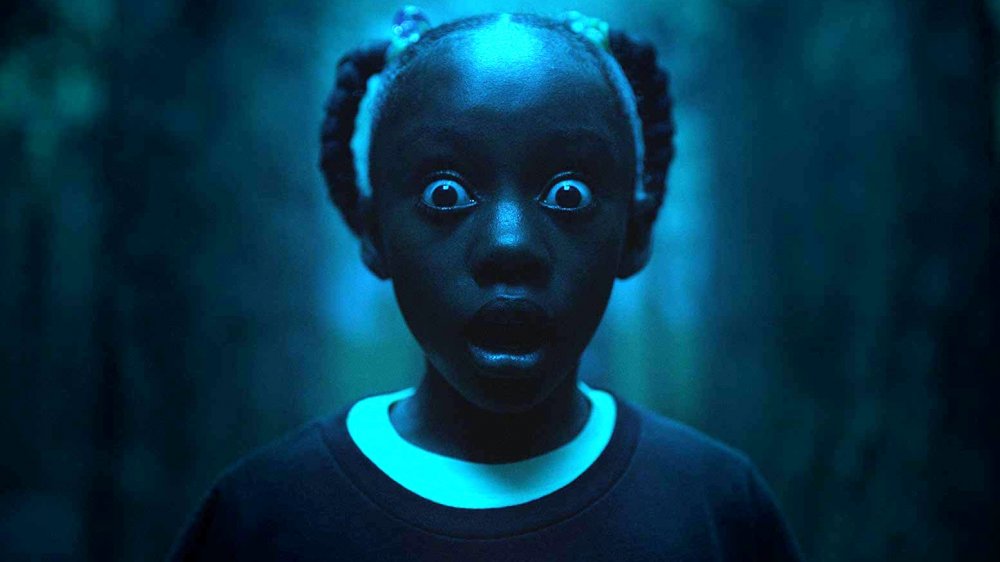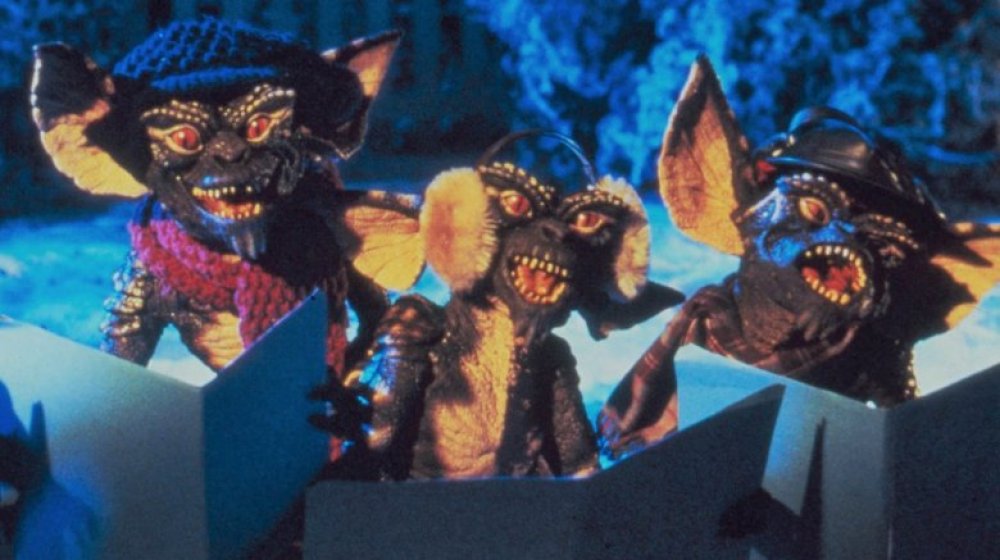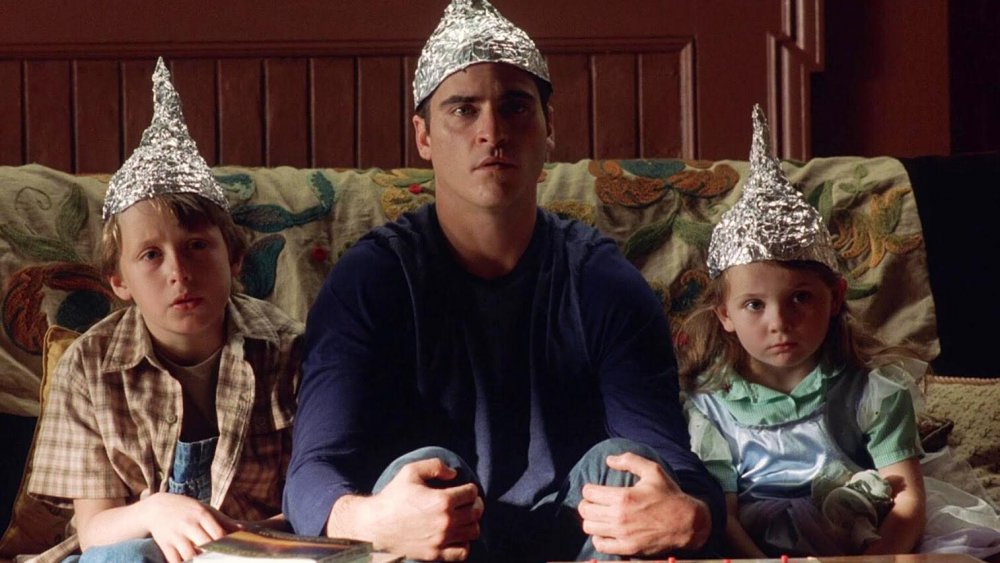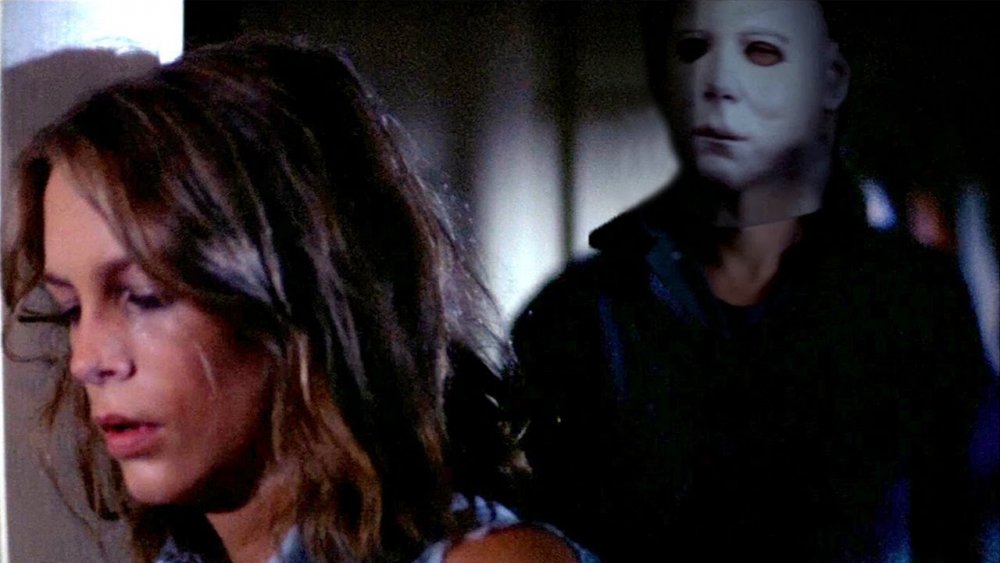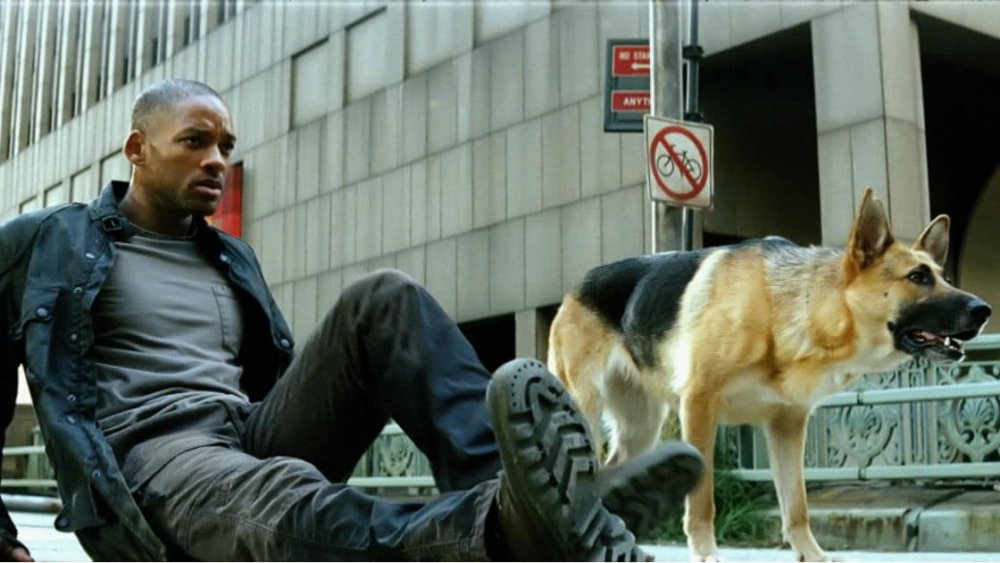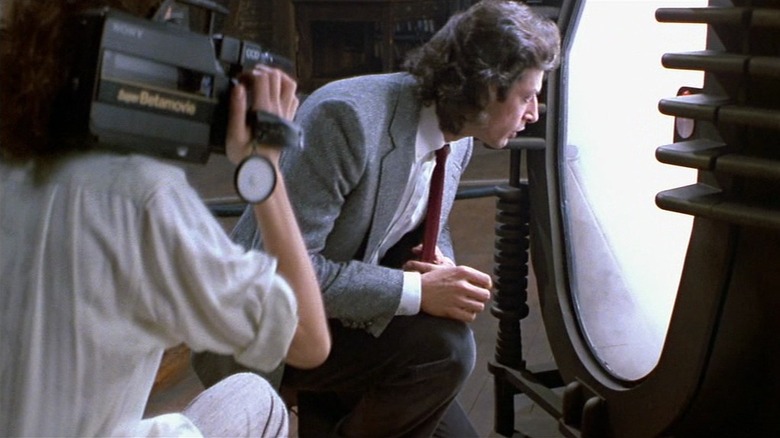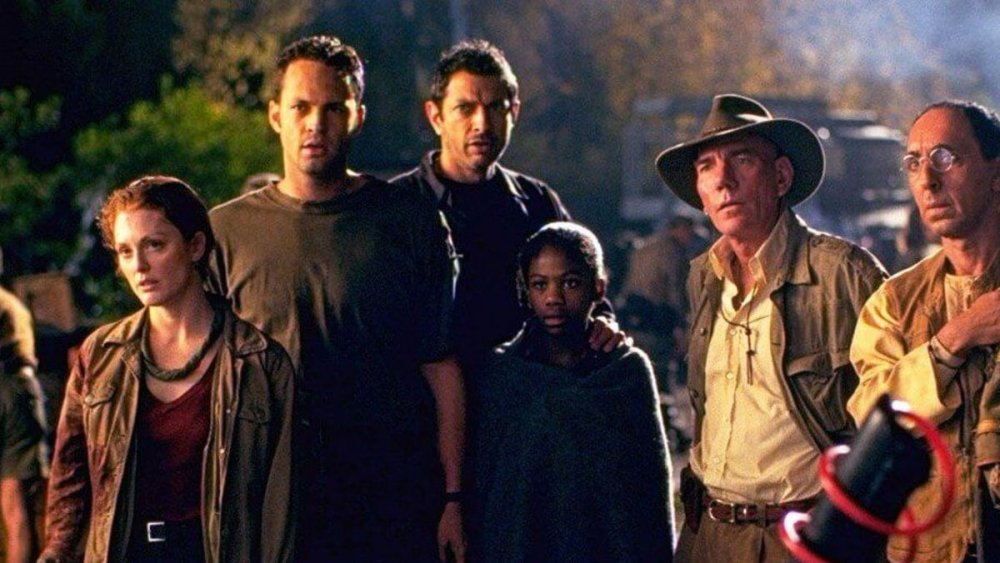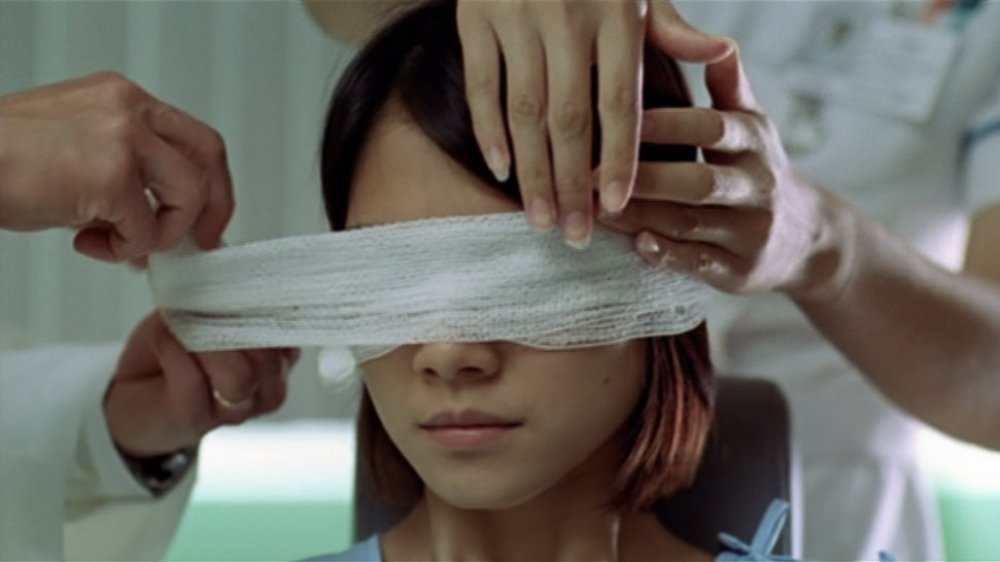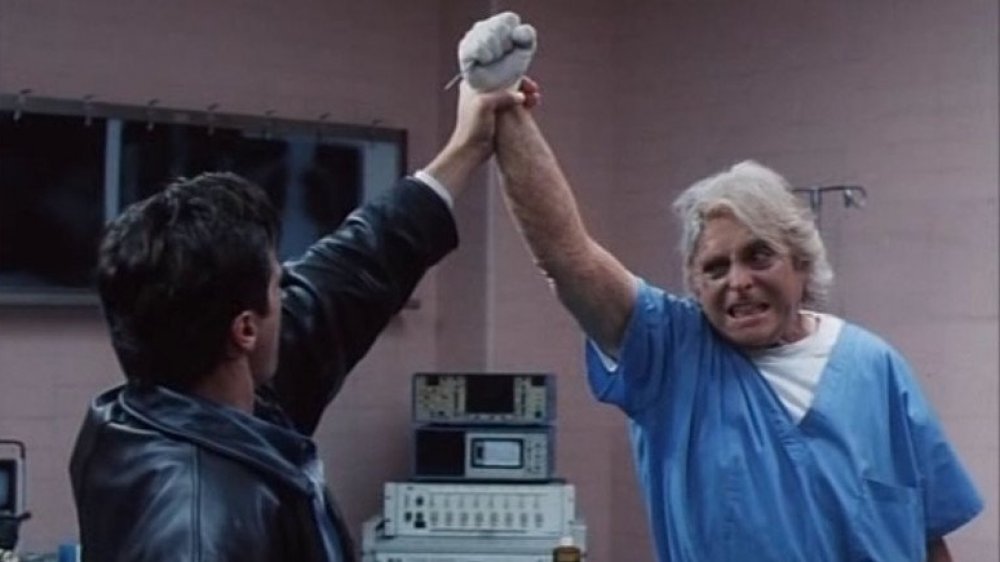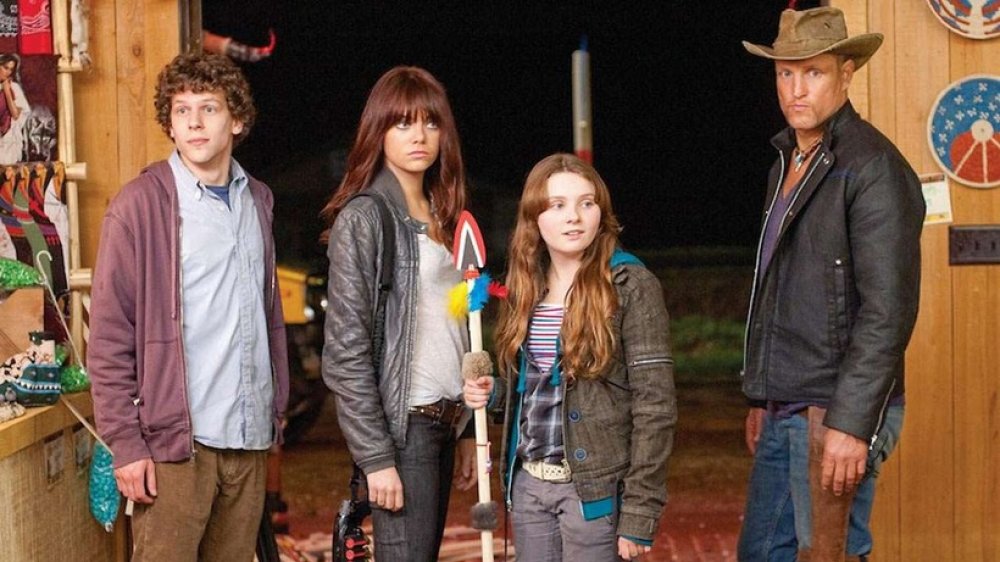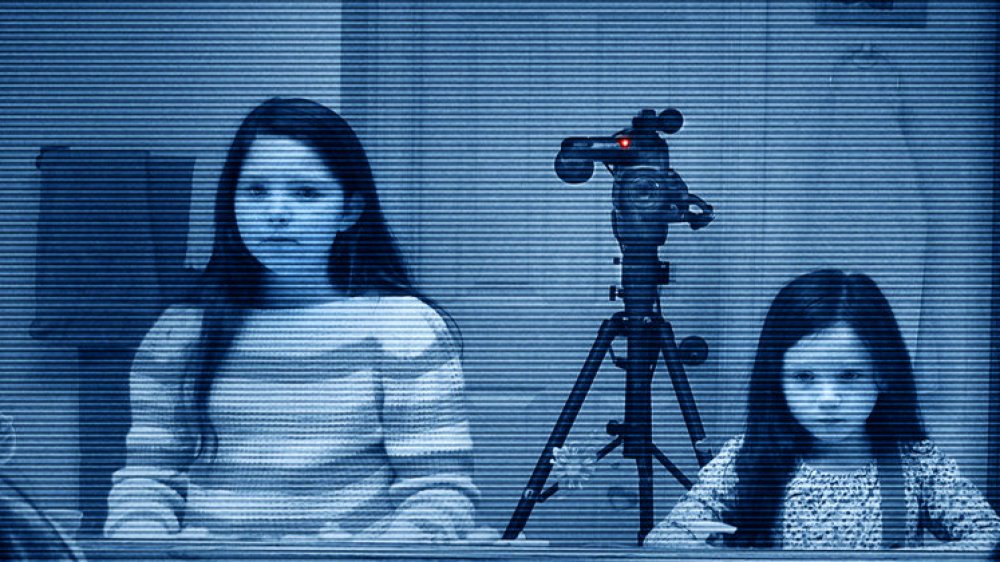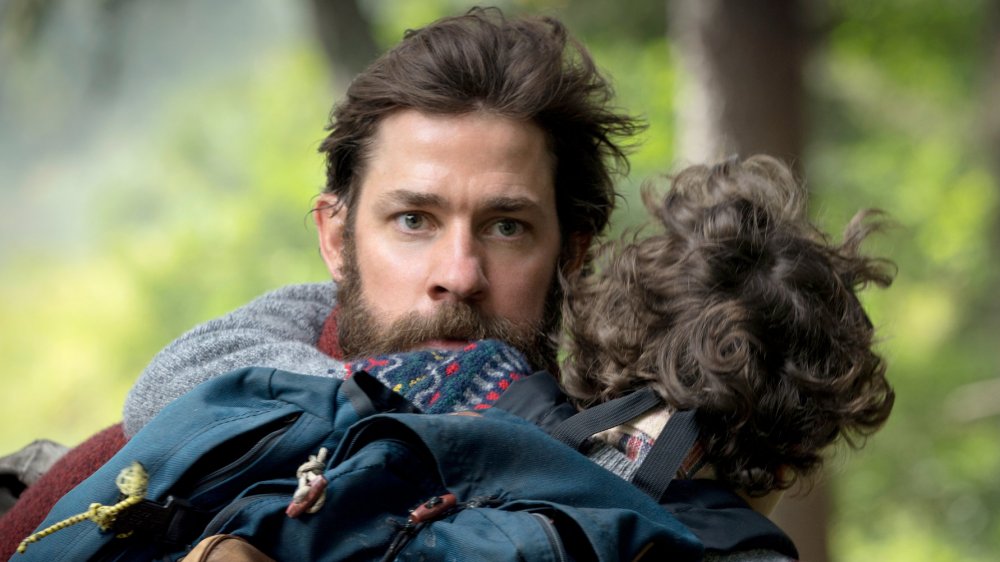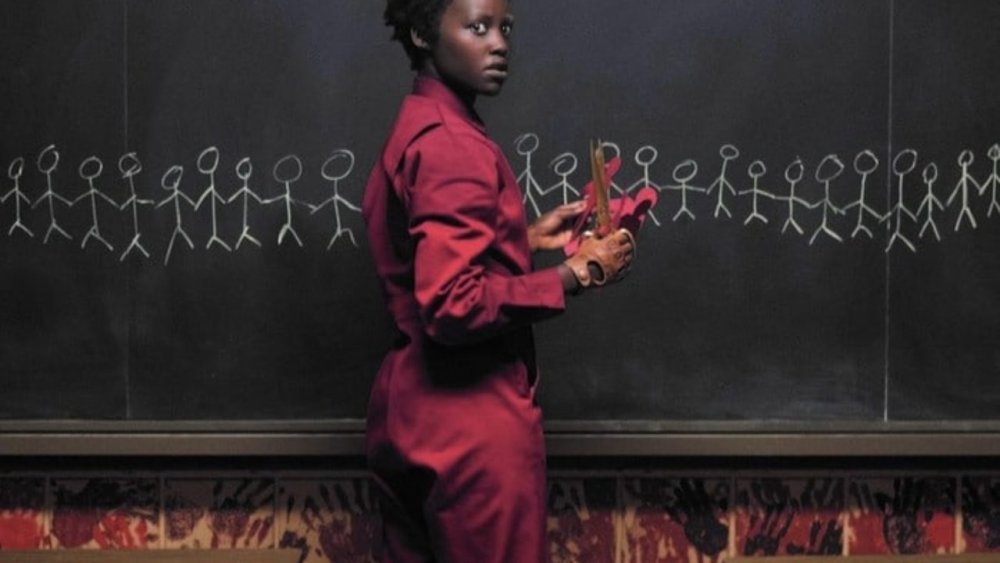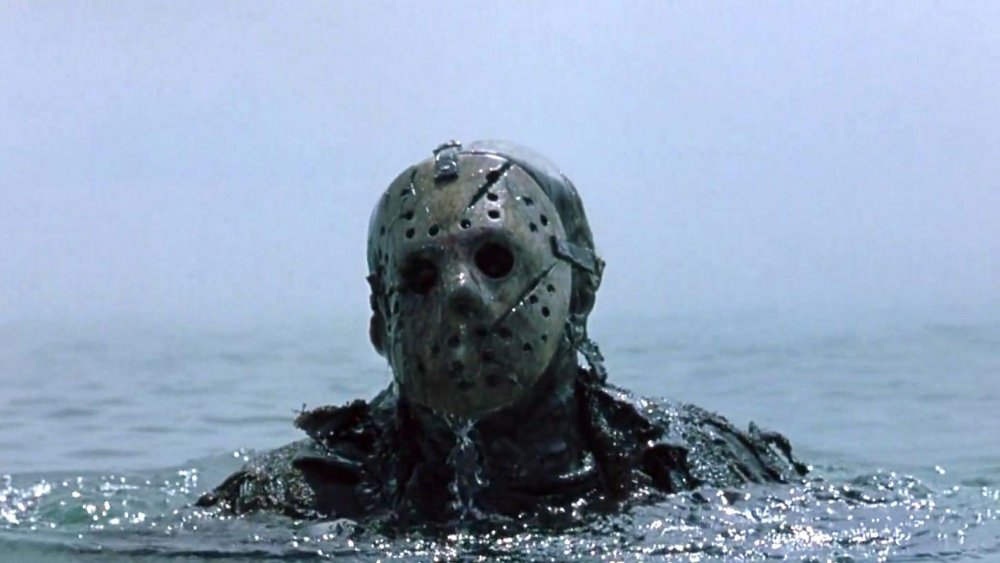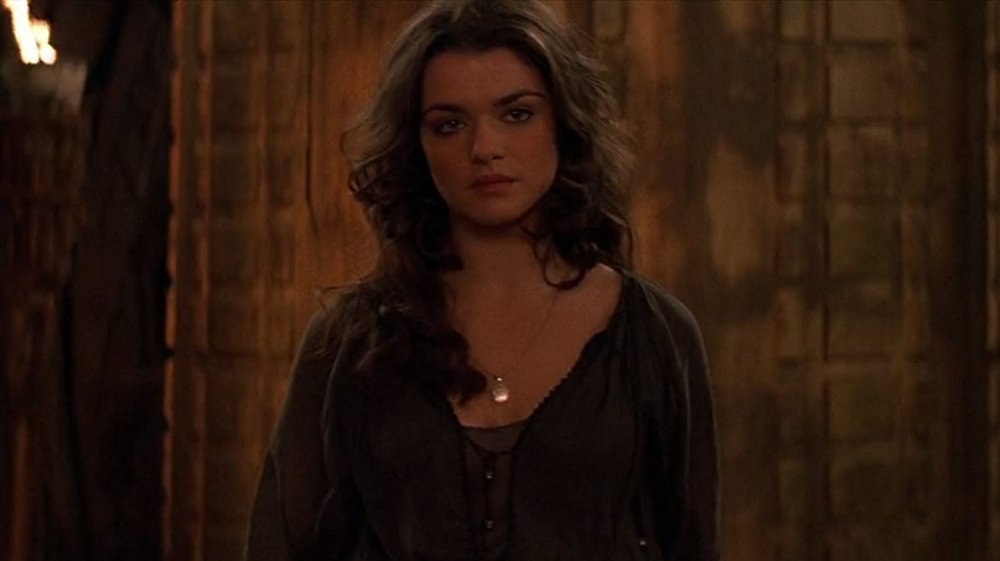The Biggest Plot Holes In Horror Movies
Whether you're more entertained by psychological thrillers or classic slasher films, there's nothing like watching a well-made suspenseful horror movie to get your adrenaline racing. When you're watching a good horror movie, you can often get so caught up in the action that you actually find yourself holding your breath — the best films in the genre are the ones that feel so real they can still give you nightmares long after the credits roll.
Unfortunately, certain popular horror movies have more than their share of narrative issues, and if you pull at one plot thread, the whole story starts to unravel. And once you notice the plot hole that throws the events of the film out of whack, you'll never be able to watch it the same way. As entertaining and as frightening as they are, these horror films all happen to have some serious plot holes — and the next time you watch them, you'll be wondering why the directors, the screenwriters, or any of the countless studio executives meddling in the finished product never managed to catch these errors.
Gremlins
Don't feed them after midnight. Don't expose them to sunlight. And do not, under any circumstances, get them wet. Those are the rules for taking care of the mysterious creatures called the mogwai in the film Gremlins. The mogwai can be deceptively cute — but their aggression can also prove deadly.
Gremlins is certainly quirky and entertaining, and it's one of the rare crossovers between the horror and holiday film genres. But the wintery setting actually presents a plot hole. If a mogwai gets wet, it will multiply, and you'll have a serious problem on your hands. However, there's snow on the ground during the film, the mogwai are depicted running around in it, and anyone who has taken an elementary school science class knows that snow is just frozen water.
By the film's own logic, they should have multiplied like crazy almost every time they went outside. The town should have been overtaken in minutes. But this wasn't how it played out — the mogwai only multiplied when they touched liquid water.
Signs
In Signs, aliens attack Earth — but as it turns out, they have a specific weakness that makes them relatively easy to defeat in the end. After his home is infiltrated, Graham Hess tries to protect his family from the invaders with little success, and it looks like the end is near — but when his nephew Merrill hits an alien with a baseball bat and knocks it into a glass of water, the liquid burns its skin, and they realize that water is fatal to the aliens.
Here's the problem: if these aliens were really "allergic" to water, they would have perished shortly after entering Earth's atmosphere because as anyone with a basic understanding of science knows, water vapor is present in the air. Furthermore, how likely was it that none of their ships would have landed in a body of water, when 70 percent of Earth's surface is covered in it? Did the aliens miraculously get a few cloudless days without so much as a brief rain shower everywhere they happened to attack? The "twist" at the end can be shocking in the moment, when you're caught up in the excitement of the story — but only if you don't think about it too hard, because when you consider how implausible it really is, all you've got is a film that should have ended before it really started.
Halloween
John Carpenter's Halloween is a horror classic that spawned an entire franchise. It's a perfect example of the slasher genre that became so popular in the 1970s and '80s. Even today, people still wear Michael Myers' infamous mask on Halloween. In the world of horror movies, the mask has become iconic — even if you've never seen the film, you've probably seen the mask.
Funnily enough, a mistake involving the mask creates a plot hole within the film. Michael is seen several times wearing it well before someone actually breaks into a hardware store and steals a Halloween mask. This mysterious thief is clearly supposed to be Michael, but the timeline is backward. So unless there were actually two murderers running around wearing the same mask (which is definitely not the plot of the film), this is just a plot hole. This would have been easily remedied by simply including the incident in the hardware store before Michael was ever shown wearing the mask.
I Am Legend
I Am Legend follows virologist Robert Neville as he struggles to survive in the ruins of Manhattan after a devastating virus sweeps across the nation. The virus has killed most of the world's population and turned a small percentage into violent zombies, and Neville has only his German Shephard Sam for companionship. He spends his days trying to find a cure for the virus and attempting to contact any remaining survivors through a radio broadcast.
One day, the unthinkable finally happens: Neville meets two other survivors. Anna and Ethan have driven to New York from Maryland after hearing Neville's broadcast. There's only one small problem with that explanation — it simply wasn't possible. After the virus started spreading, Manhattan was quarantined, and all the bridges leading to the island were destroyed. As a result, there was no way that Anna could have just driven to Manhattan to find Neville. In fact, unless other survivors took a boat or a private plane, it's unclear how anyone from the mainland could have reached Neville at all. It's a plot hole filled by an alternate cut of the film — apparently not all the bridges were blown up — but for the millions of viewers who saw I Am Legend in theaters, it was left unaddressed.
The Fly
In the 1986 remake of The Fly, rogue scientist Seth Brundle believes he has invented a way for humans to teleport between locations. He hopes that his two "telepods" will make it possible, and he thinks that he's getting close to victory. They're not perfect just yet — testing it out with a baboon resulted in the animal being turned inside out — but he's confident enough to try out teleporting for himself.
But his experiment goes horribly wrong. A fly slips into the telepod before Brundle turns it on, and over the following days, he realizes that his DNA has merged with the fly, and he is becoming a human-fly hybrid.
So, if two organisms enter the telepod together, they can merge into one — but this explanation doesn't actually hold up under scrutiny. Technically, the telepod would be full of invisible bacteria as well, and if the machine had the power to combine the DNA of multiple living creatures, Brundle should have become some sort of human-fly-bacteria hybrid — and even grosser than the creature he ends up becoming in the film's final act. A missed opportunity? Perhaps.
The Lost World: Jurassic Park
There's one particular scene in The Lost World: Jurassic Park that stumps audiences. The S.S. Venture arrives in port while transporting a T-Rex, and all the crew members have been killed. It's implied that the T-Rex on the ship was responsible. However, the T-Rex is still contained in the cargo hold, and the ship hasn't sustained any damage — not even the control room where the crew was killed. There's really no satisfactory explanation for it within the film.
As it turns out, a deleted scene explains this particular plot hole. In it, a group of raptors enter the ship and attacks and kill the crew. A raptor is also small enough to realistically fit into the control room on the ship, so this explanation makes more sense. But after the scene was cut, nothing was added to fill that gap in the narrative, and viewers were left wondering how a murderous dinosaur managed to let itself out of its cage, slay a ship full of people, and then lock itself back in.
The Eye
In the 2002 film The Eye, Mun develops the ability to see ghosts after getting an eye transplant. It turns out that the eye she received during surgery once belonged to a woman who was psychic and had visions of spirits.
There are a couple of nitpicky issues with the explanation behind Mun's visions. Not only does she gain the power to see ghosts after her eye transplant — she can also hear them. But if the explanation for her supernatural sight was the new eye, she shouldn't actually be able to hear the ghosts; only her sense of vision should have been affected. Mun's ears were never touched during the surgery, after all. Obviously, the film might have been a little strange if all of the ghosts were totally silent. It's easy to see why the filmmakers chose not to go down that route, but there should have been some sort of explanation for this logical inconsistency.
Scanner Cop
In Scanner Cop, policeman Sam Staziak uses his psychic powers to help solve crimes. The explanation for Staziak's abilities? He has an overactive hypothalamus.
Okay, maybe calling this one a "plot hole" is a little bit of a stretch, if only because we have no scientific proof that anyone genuinely possesses psychic abilities, so therefore, we don't know what kind of brain activity would actually make it possible. But it's pretty unlikely that an "overactive hypothalamus" would be responsible. The hypothalamus is responsible for regulating basic body functions. It helps your body maintain homeostasis. Yes, it does affect your emotions, but it doesn't really have anything to do with critical thinking, memory, dreaming, or any other functions that could hypothetically be related to psychic abilities.
Look, it's unrealistic to expect an advanced explanation of neuroscience from a direct-to-VHS horror movie. But even by the relaxed standards of the genre, it wouldn't have been hard to throw in a couple of lines that made the basis for the film sound a bit more plausible.
Zombieland
In Zombieland, the protagonists have all been dodging zombies for a few months by the time we meet up with them: Columbus, Tallahassee, Wichita, and Little Rock know that they need to keep their wits about them at all times. That makes the scene when they all let loose at an abandoned amusement park come across as pretty out of character. Sure, Wichita and Little Rock don't think there are any zombies in the area, but it seems unlikely that they would all completely let their guard down.
Wichita and Little Rock get the lights and the rides up and running, which begs another question — how in the world is power still being supplied to the park in this post-apocalyptic society? Naturally, zombies begin flocking to the park, and the group has to escape. It all makes for a dramatic scene, and it's not like the group never makes any mistakes when it comes to protecting themselves, but this just feels like they were looking for trouble when all of them should have known better.
Paranormal Activity 3
When the writers started working on the script for Paranormal Activity, they never anticipated that one throwaway joke would actually create a massive plot hole within the franchise. In the first Paranormal Activity film, Micah and Katie worry about the mysterious events going on in their house, so they hire a psychic to come over and get a read on the situation. He warns them about negative energy in the house, and Micah jokes that they can't invite Katie's mother over anymore.
Paranormal Activity 3 came out a few years later — and suddenly, that particular joke no longer made any sense, because a major plot point in Paranormal Activity 3 is the death of Katie's mother. Whoops!
A Quiet Place
A Quiet Place is centered around a unique concept — the world has been invaded by some sort of alien species that hunts solely with their sense of hearing. The Abbott family — Lee, Evelyn, and their children Regan, Beau, and Marcus — has been surviving by communicating in sign language and restructuring their entire lifestyle so they barely make a sound. When Beau steals a battery-powered plane from a convenience store and alerts a nearby creature to his presence, he is killed instantly — which is likely what prompts Lee and Evelyn to try for another baby, despite the high risk.
By the end of the film, the family has lost one more member — but considering how noisy they are over the course of just a few days, it's remarkable that any of them have survived this long at all. We're supposed to believe that they've managed to build a soundproof room for their new baby, coated their farm with sand to mask their footsteps, harvested corn for food, and somehow masked every random sneeze to avoid certain death. It's a genuinely creepy film, but when you really think about it, the premise is a bit flimsy.
Us
With Get Out, Us, and his Twilight Zone series, Jordan Peele has established himself as a master of the horror genre — but upon closer inspection, there's a nagging plot hole in Us.
When Adelaide wanders into a house of mirrors as a little girl, she's pulled underground by her "Tether" — a doppelgänger who is likely the result of a government experiment gone wrong. Her tether takes her place in her family, while Adelaide suffers in a labyrinth full of other tethers, who are forced to mimic the lives of their counterparts above ground. The real Adelaide decides to lead a rebellion — she organizes the tethers as they plan to go above ground, kill off their doubles, and carry out a revolution.
When they rise above, the tethers are all wearing red jumpsuits and carrying gold scissors. It makes for some striking visuals, but how did they get the materials and supplies to make the costumes? It's a massive operation, and there's really no satisfactory explanation.
Freddy vs. Jason
In any long-running franchise, fans are bound to spot a few contradictions and continuity issues, and the Friday the 13th films are no exception. With 12 films, a TV series, and a few novelizations and comic books, iconic villain Jason Voorhees has been terrorizing people for decades.
In 2003, horror fans saw Jason face off against Freddy Krueger from the Nightmare on Elm Street franchise in the film Freddy vs. Jason. As the two battle it out, Freddy strategizes by using Jason's biggest weakness against him: water. Supposedly, Jason is terrified of water because he drowned as a child.
But this left longtime fans confused. In the original Friday the 13th movie, audiences see Jason in the water at Camp Crystal Lake. He's no stranger to the water, and he's never been afraid to enter the lake before. It just doesn't seem likely that Jason suddenly developed an intense fear of water because of his childhood trauma decades after the events of the original film.
The Mummy Returns
In The Mummy, treasure hunter Rick O'Connell and aspiring Egyptologist Evelyn Carnahan narrowly escape from the City of the Dead, where they encountered the wrath of the long-dead priest Imhotep. Years later, they return to explore the ruins of Egypt with their son in The Mummy Returns — but when Evelyn is captured by a cult who has resurrected Imhotep, they find themselves in danger once again.
Imhotep's former mistress, Anck-su-namun, recognizes Evelyn as the reincarnation of the Nefertiri, an ancient Egyptian princess and the daughter of the Pharaoh Seti. Apparently, Anck-su-namun and Nefertiri didn't exactly get along in their previous lives, and the tensions between them boil over in a dramatic fight scene.
However, Evelyn and Anck-su-namun already met in The Mummy. Anck-su-namun has seen Evelyn plenty of times before — but somehow, Anck-su-namun forget to mention that Evelyn had been the Pharaoh's daughter in a past life. It's unlikely that something so important would have just slipped her mind.
